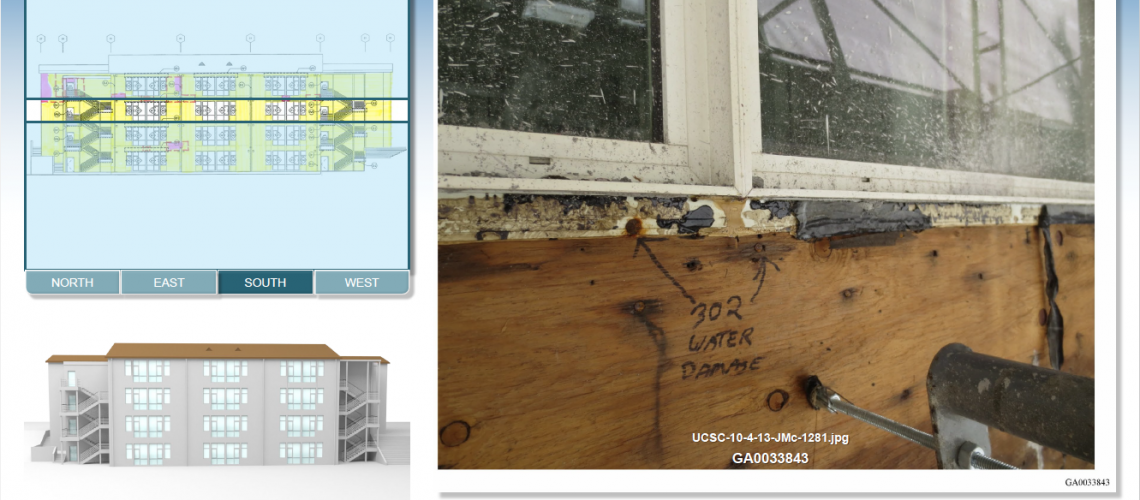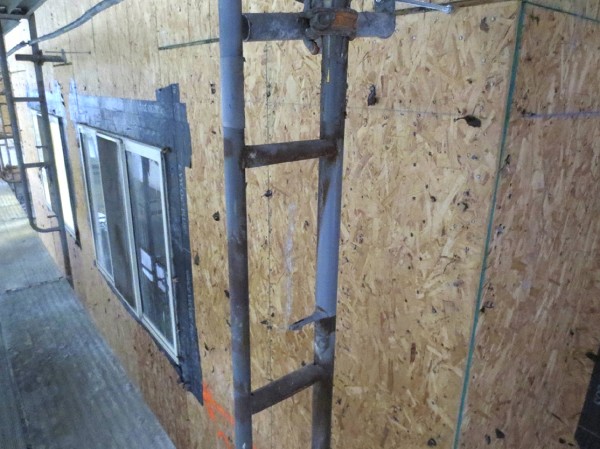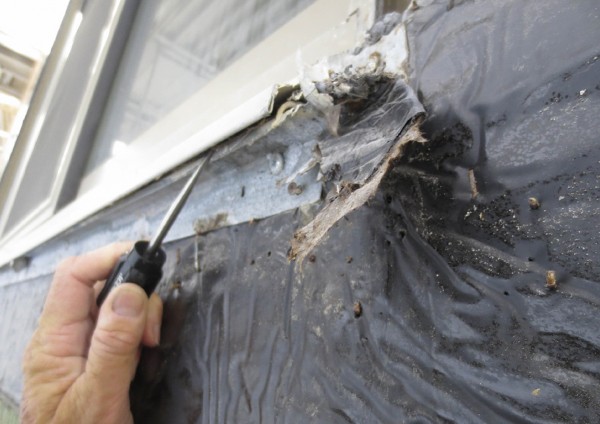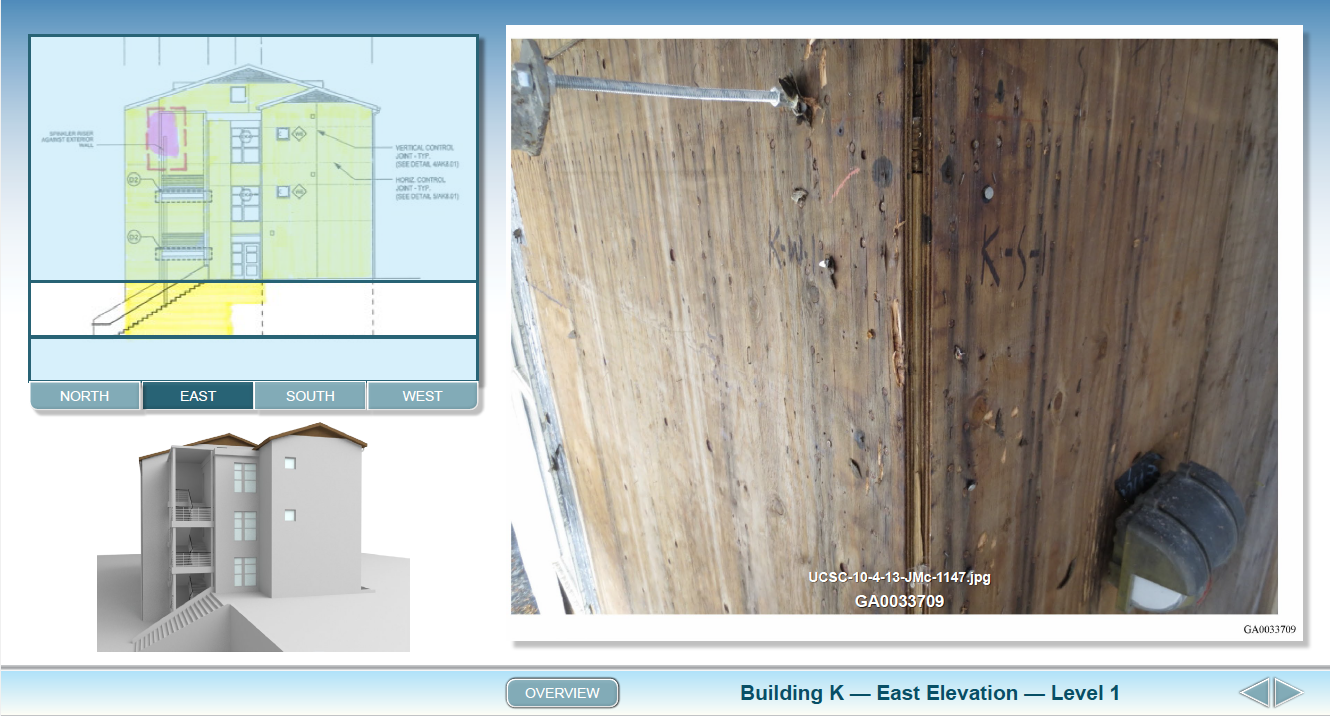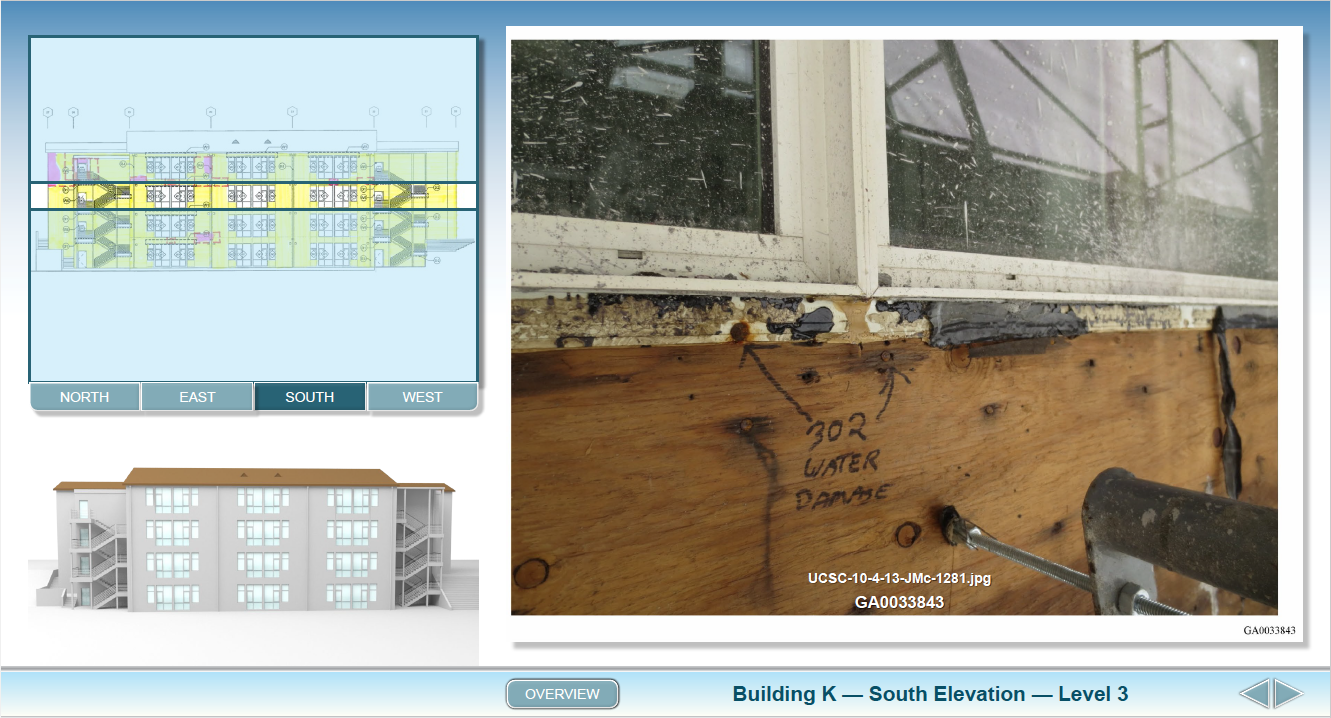77,000 photos!!! I admit to being shocked when the key expert on a recent construction defect case told us that over the last couple of years he and his staff had taken over 77,000 electronic photos of the scene. The photographic documentation started when the plaintiff identified defects in 8- to 9-year-old buildings. The expert started documenting all the testing conducted at the site: the removal of plaster; exposure of the Oriented Strand Board (OSB); damage to OSB and great swaths of areas with no damage.
In this case, defendants asserted that plaintiff unnecessarily replaced a great deal of buildings that had no damage. The photos by the expert shows in fine detail all aspects of each of the buildings, and were a foundation for his opinion that plaintiff conducted a significant amount of work was unnecessarily. This photographic record was at the same time comprehensive and overwhelming.
The big question for us at Cogent Legal was how to effectively package these photos for presentation at trial. Clearly, you cannot have an expert go through 77,000 images, one at a time, explaining what is shown in every photo, where it is located in the project and why the photo is important. No judge would allow such testimony, and a jury would kill the expert.
These photos also had the same problem that most any construction defect photos have: In order to show the specific location of the damage (or lack thereof), you lose the context of the overall building and where that photo is taken. In essence, you are left with thousands of close-up shots that give no hint by themselves where they are located. Luckily, the expert had very good record-keeping, such that every photo file number was carefully recorded to match a specific location in the various buildings.
Upon discovering this bounty of photos, we suggested developing a presentation system and database to provide context to every photo. The concept involved creating graphic images of every one of the 17 buildings involved in the claims, on all four elevation directions (i.e. North, South, East and West.) The idea was to present every single photograph in a standard graphic format, such that the photo would be displayed with graphic depictions of precisely where that photo was taken. By having a consistent presentation method, the jury could immediately know, without being told, where the photo was taken in relationship to the overall project.
Below are still images from the interactive presentation to show the layout system we developed for the case:
Secondly, we suggested creating an interactive PDF to present these series of photos. By allowing the attorney and expert to click forward or backward, the jury can quickly see a series of photos all from the same sections of the building, understand how they relate to each other, and thereby focus solely on the issue the expert wishes to discuss: lack of damage in many areas.
Thirdly, we worked with the expert to get the number of photos down to approximately 3,000 for the entire project, choosing those that best explain the conditions relevant to the case.
Finally, we developed a relational database system to automatically place all the photos with the correct graphic image of the building and elevation for that particular image. The system works similarly to a Microsoft Word mail merge function that will automatically create letters from a database, but in this case, it automatically populated the images with the proper graphic to go with the photo. This automation resulted in a saving of at least 100 hours of time, if not more, as well as reducing the high likelihood of mistakes by attempting to create such a document manually.
The end result, we believe, is a rather elegant way in which to present all these photos for trial. The interactive nature allows the attorney or expert to choose any building, any elevation and any level for quick access to the photos from that section of the building for either direct or cross examination of another expert.
If you have a case that involves a large volume of images that need organization and presentation in a compelling visual format, please contact us to see how Cogent Legal might assist with your case presentation.
If you’d like to receive updates from this blog, please click to subscribe by email.

